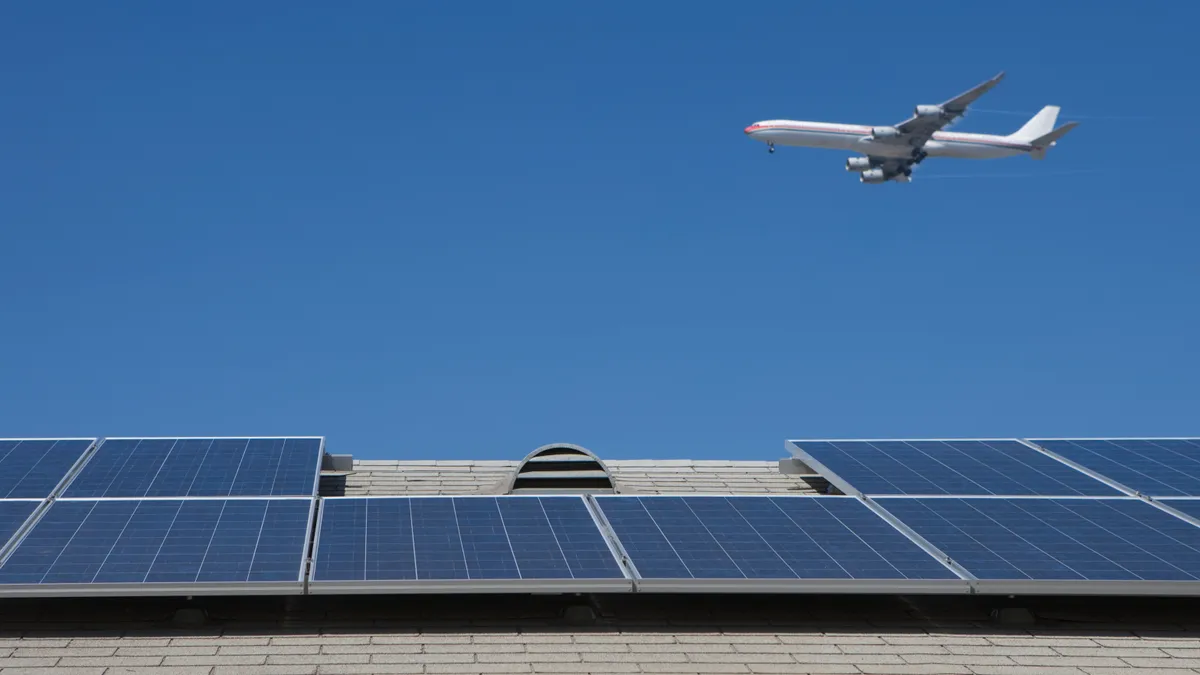Dive Brief:
- A 1.5-megawatt solar array atop an industrial building in the Panorama City neighborhood of Los Angeles is the latest renewable energy project to take advantage of the Los Angeles Department of Water and Power’s Feed-in Tariff program.
- FiT has 155 projects with a combined capacity of 105.2 megawatts in service as of December 2023, according to the program dashboard. Another 114 projects representing 72 MW are planned or under development, leaving 57.7 MW in capacity for eligible applicants.
- Applicants must agree to sell power back to LADWP for at least 10 years, according to the program website — one of several barriers to participation that Arielle Lopez, policy and programs associate for sustainability at the Los Angeles Business Council, identified in an interview with Facilities Dive.
Dive Insight:
With more than 43 gigawatts of capacity installed as of December 2023, California is by far the largest U.S. solar market, according to data compiled by the Solar Energy Industries Association. Los Angeles had the most installed solar photovoltaic capacity among the U.S. cities Environment California surveyed in 2022.
The FiT program, launched in 2013, allows eligible commercial property owners to sell energy their systems generate back to LADWP. Public-private partnerships like FiT play an important role in the region’s solar success, Lopez said. LADWP pays FiT participants up to 14.5 cents per kilowatt-hour for solar energy — slightly less than the base rate paid by medium and large commercial users in April 2023, according to an LADWP rate table.
The program’s potential as a significant revenue source for commercial and industrial property owners with ample sun-drenched roof or parking space is prompting participation from some of Southern California’s biggest real estate operators, Lopez said. For example, the Panorama City project is part of a larger commitment from its owner, Los Angeles-based Rexford Industrial, to host 8 MW of solar on its southern California properties.
The Los Angeles Business Council facilitates FiT program participation in areas historically impacted by industrial pollution, including Panorama City and surrounding northeast San Fernando Valley communities. Nearly 40% of all FiT installations are in so-called “solar hot spots,” or “disadvantaged communities with high solar potential,” said Mary Leslie, LABC president and board chair for the California Independent System Operator, which manages California’s bulk electricity market.
To raise awareness of LADWP’s solar incentives, LABC works closely with the office of California Assemblymember Luz Rivas, a sustainability advocate who represents the area. The organization also offers free solar feasibility consultations to property owners who request them and hosts educational events featuring business owners who have installed solar through FiT, Lopez said.
These efforts are necessary to overcome barriers to rooftop solar adoption that could threaten L.A.’s carbon neutrality goals, Lopez said. These include “mistrust in the solar economy,” that has arisen from sometimes “shady” business practices by California’s smaller solar installers, Lopez said. She pointed to other concerns about the FiT program’s long-term power purchase contracts; unrealistic expectations for system performance; and system activation delays that can stretch longer than a year.
According to Lopez, LABC counters those concerns by educating prospective FiT participants about the program’s upfront costs, which include up to $1,500 in application fees, up to $4,000 in grid study fees and 10% of the utility’s grid interconnection costs, per the program website. To address concerns about the long-term obligation, LABC reminds business owners that the 10- to 20-year FiT contracts attach to properties themselves, rather than property owners, so participants’ responsibilities cease when they sell those properties. LABC’s solar feasibility consultations additionally help set prospects’ expectations for system performance and payback, especially for smaller or partially shaded rooftops that might not be a good fit for the program, Lopez said.
LABC members have also complained about grid interconnection delays, which have held back renewable energy uptake nationwide. The organization has pushed LADWP to speed up the process, but “there hasn’t been much movement,” to date, as LABC and FiT participants have less control over the situation, Lopez said.
“If we want to reach our [carbon neutrality] goals, we need to keep moving,” she said.













